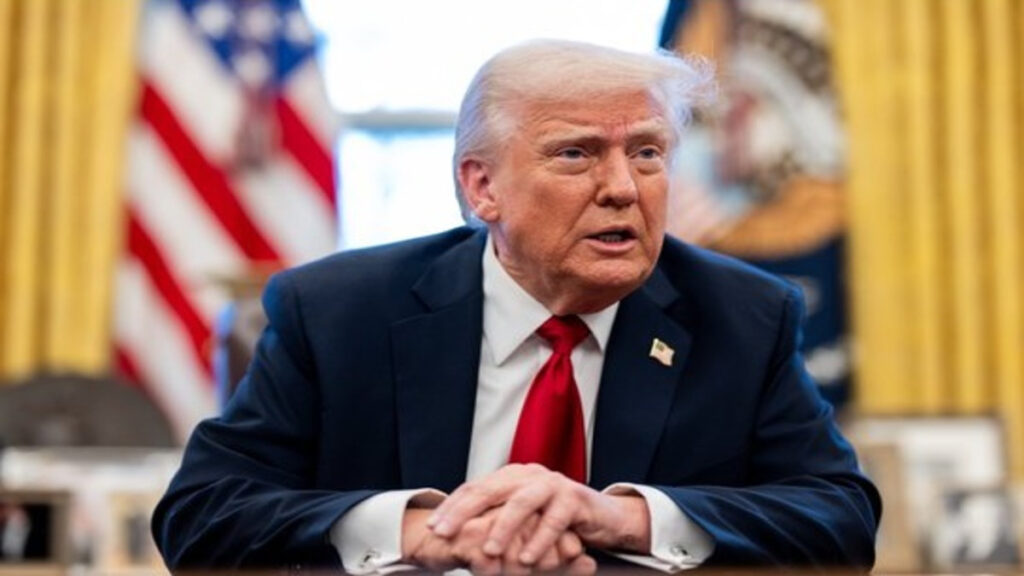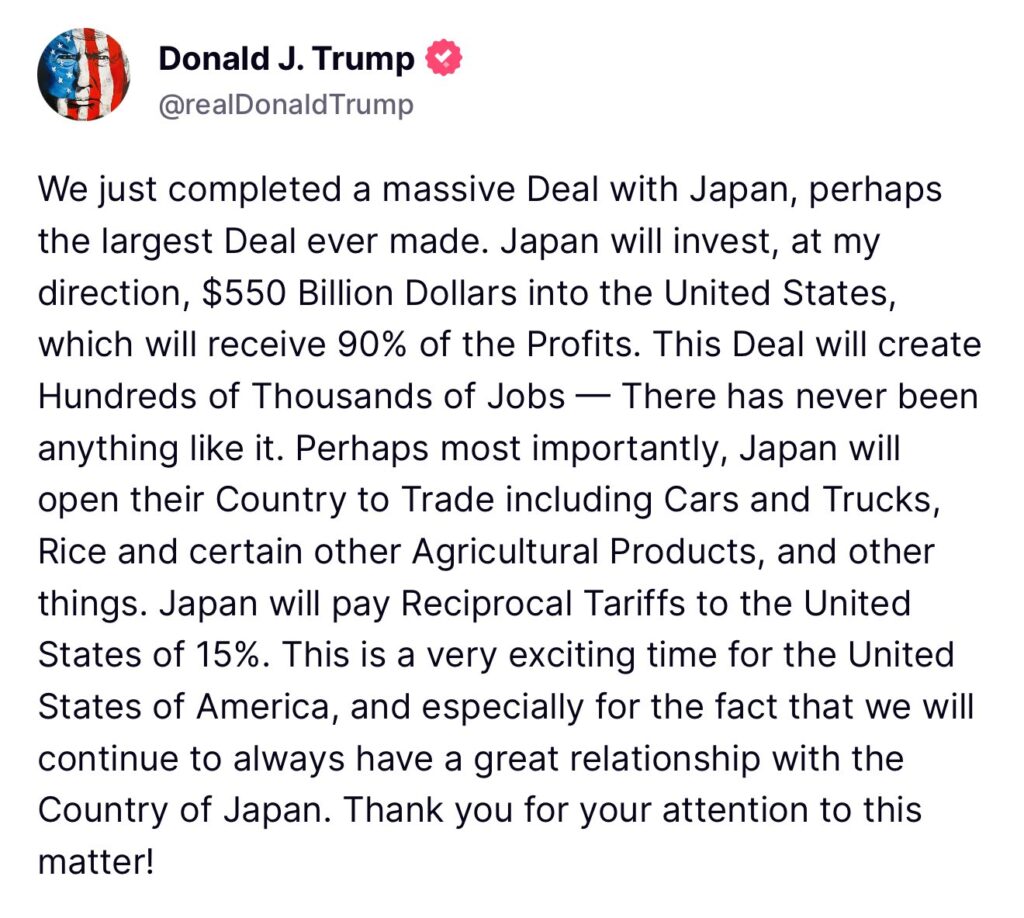
Washington D.C., July 23 – In a bold move aimed at reshaping international commerce, President Donald Trump has announced the US-Japan Trade Deal, a potentially transformative agreement between two of the world’s largest economies. The deal, featuring a 15% tariff on select Japanese goods and a massive $550 billion investment into the United States, is being described by the administration as “historic” and a “game changer” for American industries and workers.
This US-Japan Trade Deal is expected to create hundreds of thousands of jobs across sectors like automotive manufacturing, infrastructure, and technology. However, despite the celebratory tone in Washington, the trade agreement is not yet finalized. It awaits legislative approval in both the United States Congress and Japan’s National Diet.
A Landmark Economic Agreement
The newly announced US-Japan Trade Deal marks one of the largest bilateral agreements in recent history. The $550 billion investment is expected to flow into U.S.-based factories, ports, and research hubs. According to President Trump, this initiative reflects Japan’s commitment to strengthening its economic alliance with the United States.
“Our partnership with Japan is stronger than ever,” Trump declared during a press conference. “This deal will bring prosperity to both nations and ensure a fair, reciprocal trade system.”
The deal also includes provisions to open Japanese markets to more American agricultural products, which could benefit U.S. farmers struggling with trade barriers and global price fluctuations.

15% Tariff Raises Concerns
One of the most discussed features of the US-Japan Trade Deal is the implementation of a 15% tariff on certain Japanese goods entering the U.S. market. While the White House argues this will protect American industries and correct longstanding trade imbalances, some economists warn it may raise prices for consumers and strain supply chains.
Critics in both countries have expressed concerns about retaliatory measures. Japanese officials, though publicly supportive, are reportedly negotiating exemptions for key industries like electronics and automobile parts.
Legislative Approval: The Next Hurdle
Despite the fanfare, the US-Japan Trade Deal must pass through political processes before it becomes law. In the United States, the deal will undergo scrutiny in both the Senate and the House of Representatives. Several lawmakers have already requested a comprehensive review of the agreement’s implications on domestic industries.
In Japan, Prime Minister Shigeru Ishiba faces opposition from agricultural lobbies and lawmakers who fear the deal may disadvantage Japanese producers. Debates are expected in the National Diet in the coming weeks.
Until both legislative bodies formally ratify the trade agreement, its terms remain provisional.
Global Implications
Experts suggest the US-Japan Trade Deal could set a precedent for future bilateral agreements in the Asia-Pacific region. With China’s expanding economic influence, the United States has been actively seeking closer ties with key allies. This deal could be part of a broader geopolitical strategy to realign trade alliances in the post-pandemic global economy.
“This is not just a trade deal — it’s a statement of intent,” said Dr. Helen Stanford, a global economics professor at Georgetown University. “The US-Japan Trade Deal may trigger a domino effect, pushing other nations to pursue similar high value agreements.”
Conclusion
The US-Japan Trade Deal stands as a major milestone in U.S. foreign policy and international commerce. If approved, it could inject billions into the American economy, create jobs, and redefine trade relations between Washington and Tokyo.
However, until it clears the legislative hurdles in both countries, its full impact remains uncertain. For now, markets are watching closely as the political drama unfolds around what could be one of the most consequential trade agreements of the decade.
Stay connected with The News Drill for more updates.







